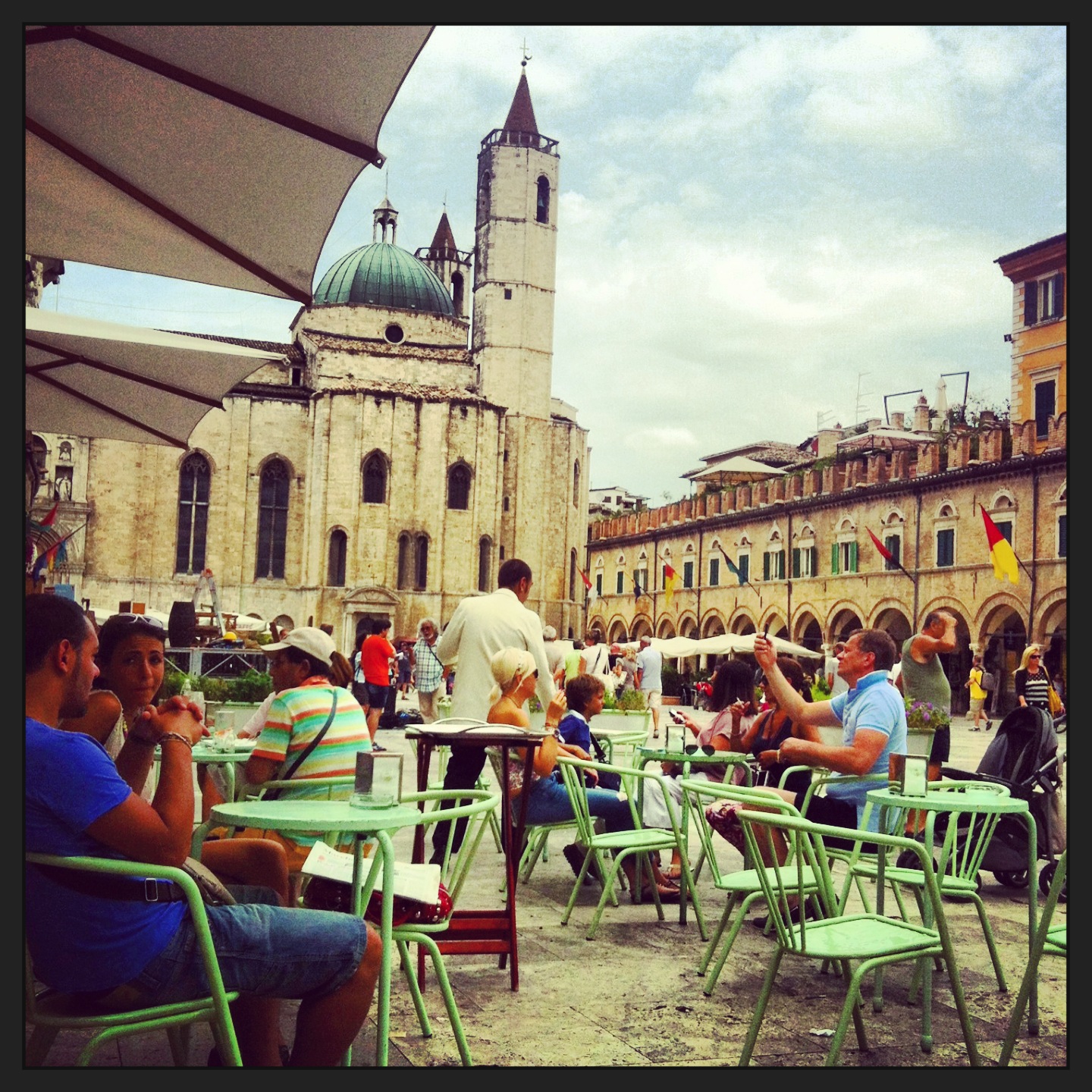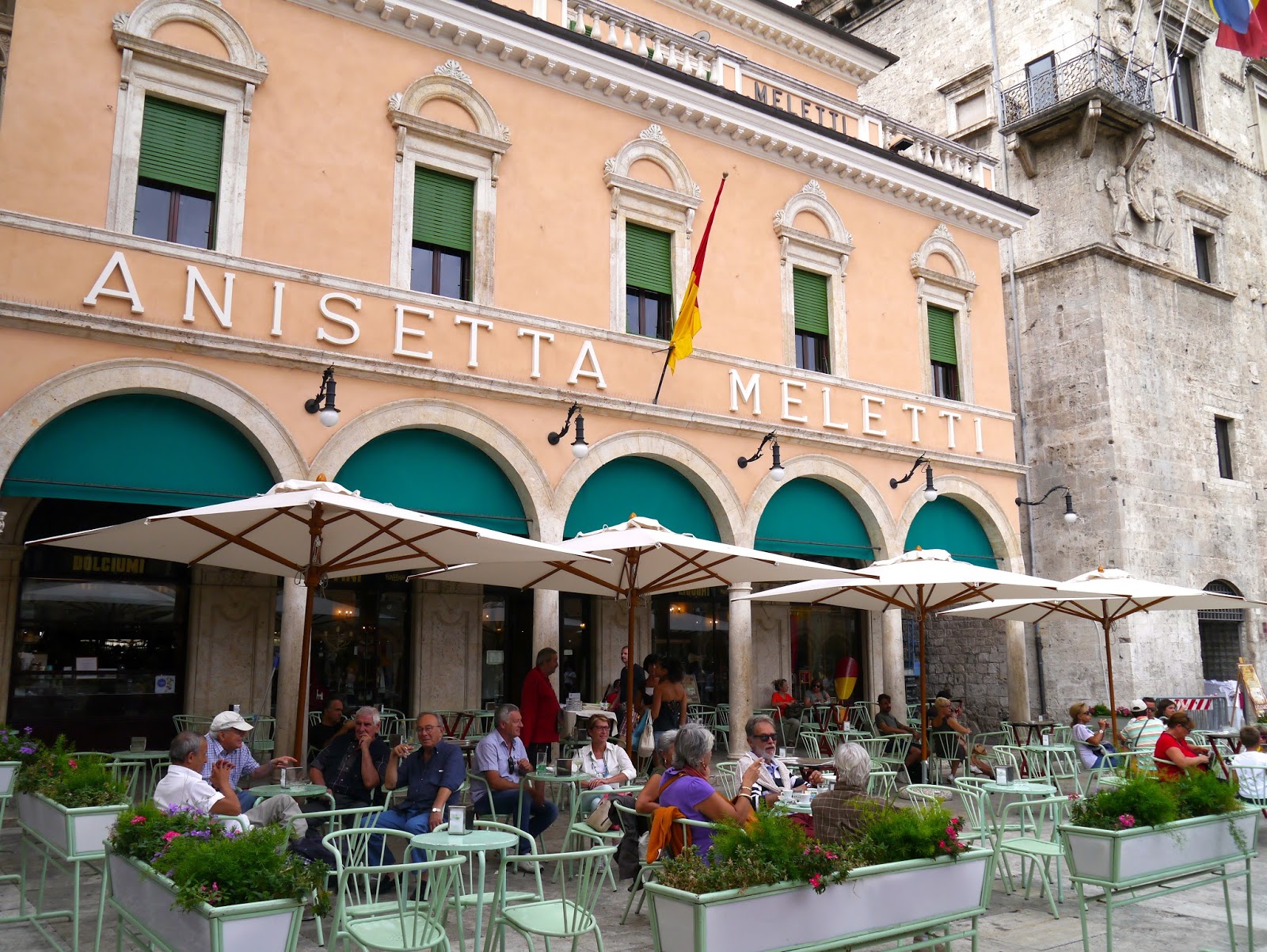 |
| Piazza del Popolo, Ascoli Piceno |
Ascoli Piceno can get a little hot and crowded in the summer. While it's not one of the stars amongst Italy's fine historic cities, it has enough charm to attract a fair number of visitors. Many of its lovely buildings and its pavements are made of white travertine marble (which could do with a bit of clean - memo to the
comune) which gives it an homogenous beauty. It's in an
earthquake region, so it's fortunate that the Duomo, the Bapistry, the church of San Francesco and a few Roman remains have survived. Some give credit for this to the city's patron saint,
San'Emidio.
 |
| Ascoli Piceno locator. |
But once you've strolled about and taken in the lovely facades, you might need some refreshment.
 |
| Caffé Meletti |
You're in luck - the
Caffé Meletti on the
Piazza del Popolo is an early inventor of anisette, a liqueur made from
anise. Wiki tells us:
The liqueur has a powerful flavour when drunk straight, and can even produce irritation to the throat if not taken slowly due to its high alcoholic content. In mixed drinks, however, it produces a sweet agreeable flavour. It is often mixed simply with water, where it produces a milky white consistency. (source)
 |
Chillin' at one of Italy's historic caffés.
Renaissance arches line the piazza. |
Caffé Meletti's
website has an interesting history of the lovely Art Deco caffé:





No comments:
Post a Comment